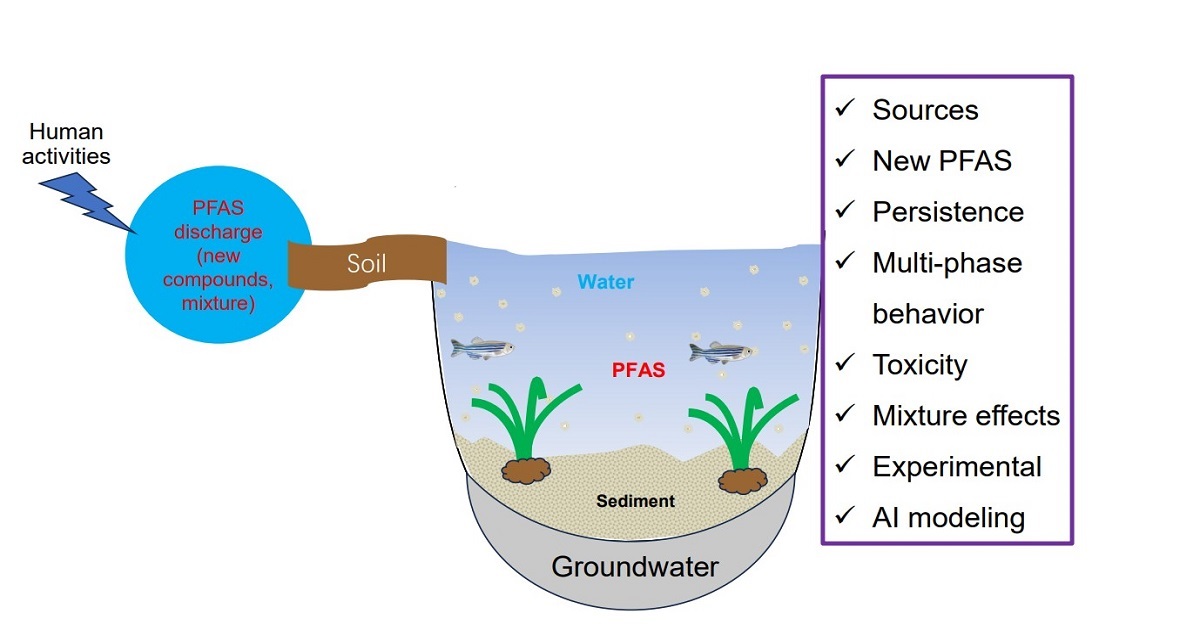Sources, Fate, and Environmental Impacts of PFAS in Aquatic Ecosystems
A special issue of Water (ISSN 2073-4441). This special issue belongs to the section "Biodiversity and Functionality of Aquatic Ecosystems".
Deadline for manuscript submissions: 20 March 2025 | Viewed by 1550

Special Issue Editors
Interests: carbon fiber; hydrogel fiber; biomaterial; energy; agricultural; composite materials
Special Issues, Collections and Topics in MDPI journals
Interests: water and wastewater treatment technology; renewable energy generation; remote sensing of vehicle emissions; environmental processes; contaminated land remediation
Special Issues, Collections and Topics in MDPI journals
Special Issue Information
Dear Colleagues,
Per- and Polyfluorinated Substances (PFAS) are the so-called forever chemicals, as a result of their extremely high persistence in the environment. PFAS are widely used in everyday products, as well as industrial activiites such as fire fighting, hence, PFAS are discharged daily into water and soil environments. In addition, there are evidences that PAFS can migrate to plants and aquaitc organisms, thereby affecting aquatic ecosystems. Extensive research has been conducted on PFAS sources, behaviour and toxicity. However, such studies are often confined to specific environment (water, soil etc), or limited number of compounds (as few as one compound). The presence of multiple PFAS including newer compounds are under-explored, especially their multi-media interactions and mixture effects on plants, animals and potentually human health.
This Special Issue aims to gather current research on PFAS mixtures especially newer compounds in the different environmental compartments, including their sources, environmental behaviour and adverse impacts. Both orignal research and critical review articles are welcome. In addition to experimental studies, modeling work by using machine learning and other AI tools are valuable contributions.
Dr. Mohammad Boshir Ahmed
Prof. Dr. John Zhou
Guest Editors
Manuscript Submission Information
Manuscripts should be submitted online at www.mdpi.com by registering and logging in to this website. Once you are registered, click here to go to the submission form. Manuscripts can be submitted until the deadline. All submissions that pass pre-check are peer-reviewed. Accepted papers will be published continuously in the journal (as soon as accepted) and will be listed together on the special issue website. Research articles, review articles as well as short communications are invited. For planned papers, a title and short abstract (about 100 words) can be sent to the Editorial Office for announcement on this website.
Submitted manuscripts should not have been published previously, nor be under consideration for publication elsewhere (except conference proceedings papers). All manuscripts are thoroughly refereed through a single-blind peer-review process. A guide for authors and other relevant information for submission of manuscripts is available on the Instructions for Authors page. Water is an international peer-reviewed open access semimonthly journal published by MDPI.
Please visit the Instructions for Authors page before submitting a manuscript. The Article Processing Charge (APC) for publication in this open access journal is 2600 CHF (Swiss Francs). Submitted papers should be well formatted and use good English. Authors may use MDPI's English editing service prior to publication or during author revisions.
Keywords
- PFAS
- water quality
- groundwater
- toxicity
- persistence
- plants
- remediation
Benefits of Publishing in a Special Issue
- Ease of navigation: Grouping papers by topic helps scholars navigate broad scope journals more efficiently.
- Greater discoverability: Special Issues support the reach and impact of scientific research. Articles in Special Issues are more discoverable and cited more frequently.
- Expansion of research network: Special Issues facilitate connections among authors, fostering scientific collaborations.
- External promotion: Articles in Special Issues are often promoted through the journal's social media, increasing their visibility.
- e-Book format: Special Issues with more than 10 articles can be published as dedicated e-books, ensuring wide and rapid dissemination.
Further information on MDPI's Special Issue polices can be found here.






